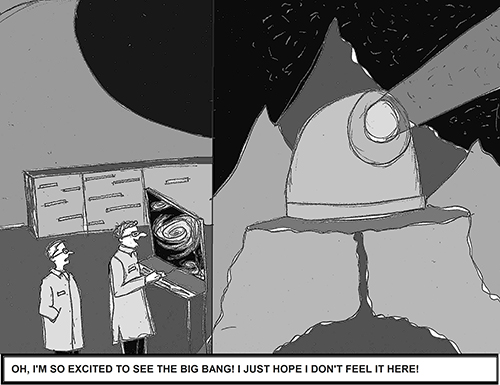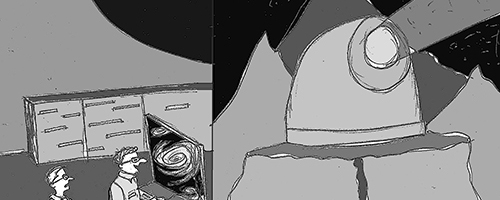A long time ago, in a galaxy far, far away…” Made famous by George Lucas’ Star Wars films, that phrase has managed to captivate audiences worldwide for decades and has become emblematic of our space fantasies. Those films, along with others of their ilk, mirror the fascination we denizens of this little green-and-blue planet have with the worlds above and below us.
Farther and farther beyond

A long time ago, in a galaxy far, far away…”
Made famous by George Lucas’ Star Wars films, that phrase has managed to captivate audiences worldwide for decades and has become emblematic of our space fantasies. Those films, along with others of their ilk, mirror the fascination we denizens of this little green-and-blue planet have with the worlds above and below us.
There is something romantic about yearning for things as far away as the moon or the Pleiades. Since we can’t get to them by any conventional means, why not just enjoy their cosmic beauty from a distance?
A long time ago, on a continent far, far away, some cool dude named Hans Lippershey invented this thing that allowed folks to see really far. Then this other cool dude named Galileo Galilei made some changes to it and called it a telescope. They didn’t work together, nor were they contemporaries of one another, but they both had the desire to see the stars up close and personal. This shared desire is the motivation behind a new, modern-day stargazing toy: the Thirty Meter Telescope.
Those galaxies far, far away might not be so far away for much longer. The telescope, which will be built on the Island of Hawaii near the summit of Mauna Kea, was waiting on approval from the Hawaiian Board of Land and Natural Resources until a few weeks ago. The BLNR granted construction and operation permits to the teams behind the scope’s inception, and construction is set to begin sometime next year.
Sure, there are plenty of large-scale telescopes located in observatories and planetariums around the world, but nothing of this magnitude exists. The Thirty Meter Telescope will be made of a 30-meter-wide mirror that will allow astronomers and astrophysicists to see further into space than ever before—even into black holes, according to a TMT press release.
And just so you understand the scale of a 30-meter-wide mirror, it consists of 492 smaller, hexagonal mirrors. This telescope will extend the gaze of space lovers 13 billion light years away, according to the TMT project’s website.
Thirteen billion light years seems like a long ways away. It is. In fact, neontonomy.com, wired.co.uk and The New York Times allude to the telescope’s ability to see glimpses of the history, beginnings and early years of the universe. We’ll hopefully get high-definition photos of planets outside our solar system. For all we know, the forest moon of Endor could be a real place.
I’m a not-so-closeted Star Wars and Star Trek fan, so the prospect of any planet that’s Ewok-infested or capable of sustaining human life is pretty exciting to me. However, I don’t want to get my hopes up just yet, which is why the news that three new Star Wars films are underway was music to my ears.
The development of this telescope is important because it will undoubtedly aid scientists in understanding how the universe came to be, as well as help us understand the world around us. It’s also helping us develop scientific and financial partnerships with China, India and Japan, which could be either beneficial or detrimental depending on your political leanings.
Although construction is set to begin within the next two years or so, actual observations won’t begin until 2021. That’s a long time off, which is lame, but think of what we’re going to be able to see! “We,” of course, means the scientists and physicists lucky enough to view the stars through the Thirty Meter Telescope, but we’ll be able to see whatever they feel like sharing with us.
Hopefully it will be everything.
One sad part of this new astronomical development is that NASA isn’t really involved. Since its funding has been cut so much in the past few years, NASA has had to restrict what it can and can’t support. Sadly, the telescope is one of the projects it isn’t a part of.
Another unfortunate planning aspect for this project is that it will only be the largest telescope in the world for about five years. After that, construction of the European Extremely Large Telescope will be finished. The EELT will be an impressive 137 feet in length. It’ll be a while before the U.S. will be able to compete with that, and that’s all right. For now, we can plan on a solid few years during which we’ll have the most impressive space technology.
For now, all we can do is sit back and wait for the telescope to be finished. When it is, space won’t be such a final frontier anymore. Of course by then we’ll have something else out there in the cosmos to fantasize about. Personally, I’m hoping for some space shuttles that’ll be able to travel at light speed, complete with Han Solo at the helm.






